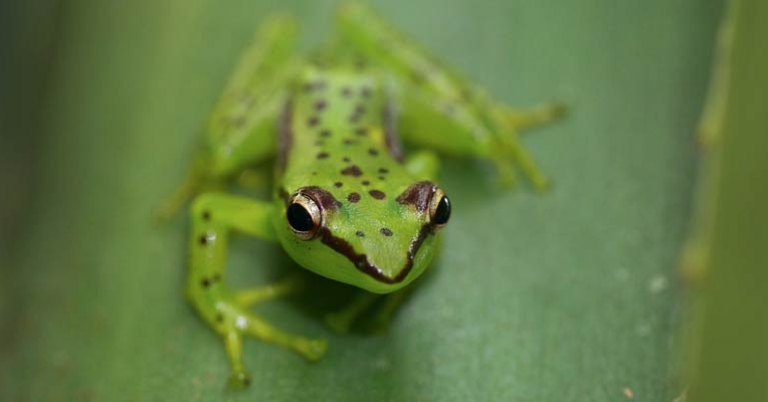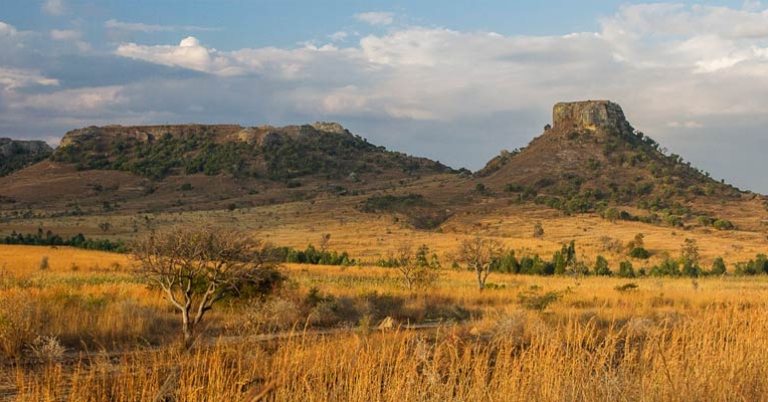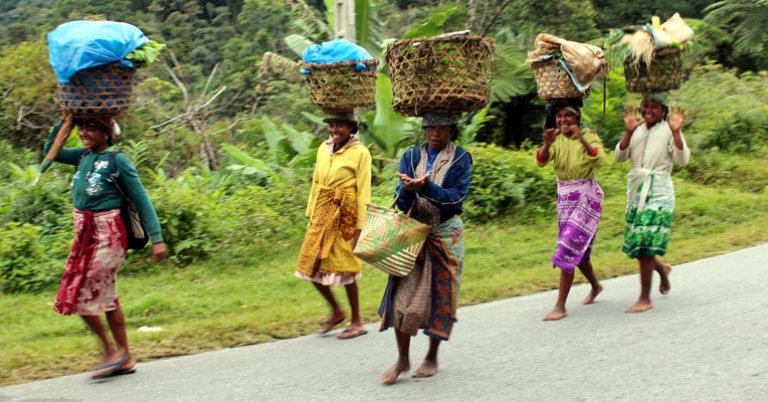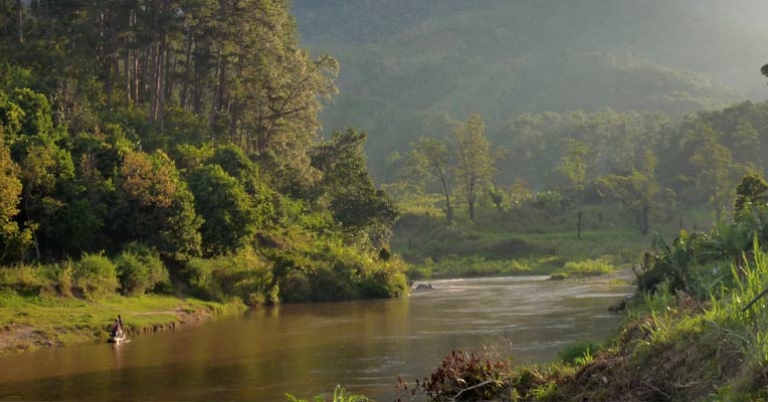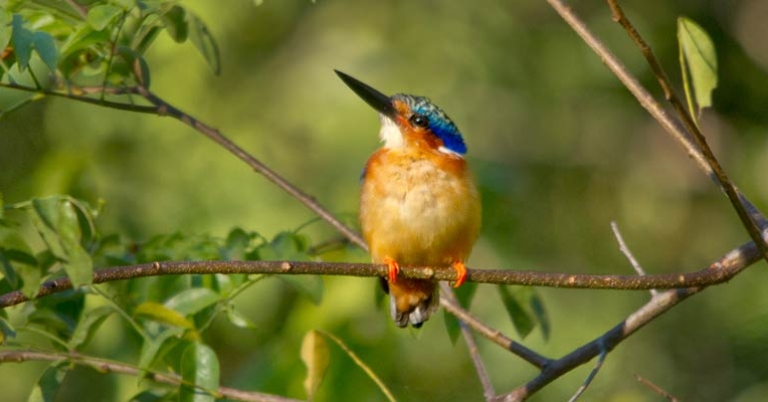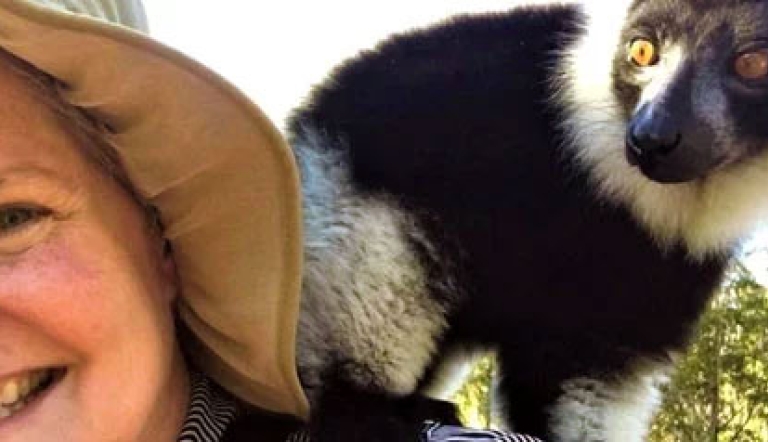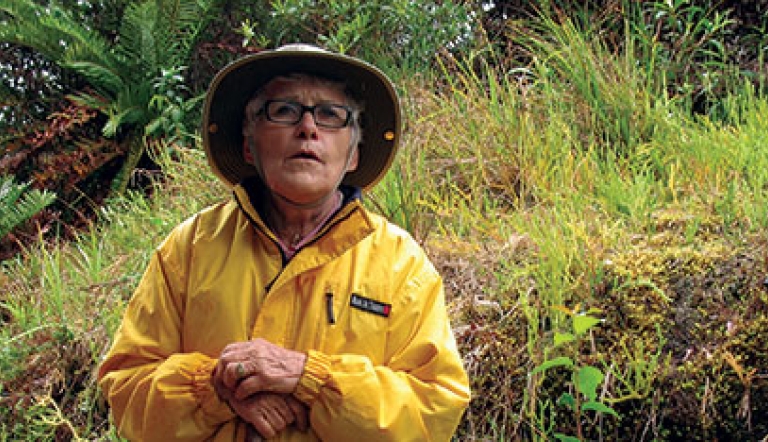Madagascar | Wildlife and Culture of the Red Island
About this trip
Madagascar inspires the imagination with its playful lemurs, strange-looking baobab trees, and distinct red-hued soil. The vast majority of its flora and fauna are endemic to the island, making it a true biodiversity hotspot. On this exploration of the “eighth continent,” come face-to-face with wildlife like chameleons, geckos, flying foxes, rare birds, and the country’s many lemur species, from the giant indri to the diminutive mouse lemurs. Madagascar’s vegetation is equally fascinating and is characterized by spiny forests, endangered palms, hundreds of orchid varieties, carnivorous plants, and dwarf baobabs. Take guided hikes in national parks and private reserves, learn about the Malagasy way of life, and relax in the turquoise waters off the coast of the “Great Red Island.”
Highlights
- Visit Lemur Island, a sanctuary where you can interact with and photograph lemurs rescued from the pet trade.
- Hike in the rainforests of Ranomafana National Park and learn about flora, fauna, and research efforts at Centre ValBio, a leading field research facility run by renowned primatologist Dr. Patricia Wright.
- Explore the sandstone canyons, rocky deserts, and cascading waterfalls of Isalo National Park and swim in a natural pool.
- Meet with local Malagasy community members to learn about commerce, conservation, art, and women’s initiatives.
Activity Level 4: Moderate-Strenuous
This journey provides an in-depth look at an island nation whose culture is unique, and whose flora and fauna are found nowhere else on earth. Your comprehensive itinerary covers six locations with epic landscapes ranging from towering forests to sandstone canyons to rocky deserts and idyllic beaches. But great distances and a poor infrastructure make travel between them taxing. Some days involve long drives of up to 7 hours, often on bumpy, dusty roads. Cultural discovery includes lectures and folkloric performances; plus visits to tribal villages, an historic fortress-palace, a factory, and an artisanal workshop. Expect some early mornings and hikes that may last up to 4 hours. The hike in Ranomafana is moderately difficult and uphill on the way in, with the possibility of going off-trail. The physical ability of your small group (12 members, maximum) will determine our pace. April through October is the dry season, when there is less humidity and average temperatures fall between 68–79˚F.
Land Cost
$5,900 - Jan 1, 2025 - Dec 31, 2026
$6,275 - Jan 1 - Dec 31, 2027
Book 10 travelers and 1 group
leader travels for free
What makes us different
Wildlife up-close
Service anytime
Cultural Discovery
Custom-tailored trips
Support local communities
Flight arrangements
Daily Itinerary
Print ItineraryDay 1
Antananarivo
Day 2Day 2
In transit flight.
Antananarivo
Day 3Andasibe
Day 4Andasibe
Day 5Andasibe
Day 6Antananarivo
Day 7Antsirabe
Day 8Ranomofana National Park
Day 9Ranomofana National Park
Day 10Isalo National Park
Day 11Isalo National Park
Day 12Ifaty
Day 13Ifaty
Day 14Transfer to the airport for the flight back to Antananarivo. This evening, have dinner at the hotel.
Ifaty
Day 14Antananarivo
Day 15Depart
Day 16U.S. arrival
Day 17Pricing
Print PricingLand Cost
$5,900 - Jan 1, 2025 - Dec 31, 2026
$6,275 - Jan 1 - Dec 31, 2027
Book 10 travelers and 1 group
leader travels for free
What's Included
- Activities and meals as mentioned in itinerary
- All Tips except Guide and Driver
- Bottled water or water refill station during transfers
- Carbon Offset
- Full time guide for the duration of your program
- Internal flights relevant to itinerary
- Private transportation and driver for the duration of the program
What's Not Included
- International airfare
- Items of personal nature
- Tips for guide and driver
- Travel Insurance
Pricing Details
Prices are valid for travel from Jan 1, 2025 - Dec 31, 2026. Holiday surcharges may apply.
Travel Info
Print Travel InfoEntry & Exit Requirements
U.S. citizens must have a passport with at least three blank pages and valid for at least six months beyond your date of entry into Madagascar.
For stays of 15 days or fewer: A visa is not required, but travelers are required to pay a USD $10 administrative fee. You have the option of paying this fee online in advance at https://evisamada-mg.com/en/home or upon arrival in Madagascar (cash only, U.S dollars accepted).
For stays longer than 15 days: A visa is required for entry. The cost for a single-entry visa for a visit up to 30 days is USD $37. You may obtain and pay for an electronic visa in advance at https://evisamada-mg.com/en/home or you may obtain a visa upon arrival in Madagascar. If obtained upon arrival, the visa fee must be paid in cash (U.S. dollars accepted).
If you are not traveling with a U.S. passport, please be sure to check with the Madagascan Embassy for requirements based on your nationality.
Health Information
IMMUNIZATIONS
The Centers for Disease Control recommends that all travelers be up to date on routine vaccinations such as measles-mumps-rubella (MMR) vaccine, diphtheria-pertussis-tetanus vaccine, varicella (chicken pox) vaccine, polio vaccine, and your yearly flu shot before every trip.
There are no vaccinations required for entry into Madagascar unless you are arriving from a country where yellow fever transmission is a risk (including transiting 12 or more hours through the airport of a country where yellow fever is a risk).
The CDC recommends hepatitis A, hepatitis B, and typhoid vaccines for most travelers visiting Madagascar. The CDC also recommends a single lifetime booster dose of polio vaccine for adults who previously completed the full, routine polio vaccine series.
Please consult your physician for additional information and recommendations based on your individual circumstances.
MALARIA
The CDC warns that travelers to Madagascar may be at risk for exposure to malaria. Malaria is caused by a parasite found in Anopheles mosquitos, which are active from dusk until dawn. Prevention is twofold: the use of anti-malarial drugs and the prevention of insect bites. If you choose to use an anti-malarial drug, as recommended by the CDC, see your physician for a prescription.
To protect against mosquitos, the CDC recommends that you cover exposed skin with lightweight, long-sleeved shirts and pants, consider treating clothes with permethrin, and use an insect repellent containing an EPA-registered active ingredient like DEET, picaridin, or oil of lemon eucalyptus (OLE). Apply sunscreen first, followed by the repellent, ideally 20 minutes later.
Be careful when applying products containing DEET, as it can damage or dissolve certain synthetic fabrics as well as plastic, rubber, vinyl, or elastic materials, such as those used in camera equipment, phone cases, sunglasses, or watches. Additionally, some research suggests that when DEET and picaridin enter local waterways, they can be harmful to amphibians and other wildlife. When selecting a repellent, it is ultimately up to each traveler to weigh the risks and benefits of different options, keeping in mind both environmental factors and the importance of protecting against illness.
OTHER INSECT-BORNE ILLNESSES
In addition to malaria, the CDC warns that travelers may be at risk for several insect-borne illnesses carried by mosquitos, ticks, and fleas, such as dengue fever, chikungunya, African tick-bite fever, and others.
The CDC recommends that travelers to Madagascar protect themselves against insect bites using the measures noted above. After spending time outdoors in grassy or wooded areas, the CDC recommends showering and conducting a full-body check for ticks. If you find a tick attached to your skin, safely remove it as soon as possible.
SUN EXPOSURE
The effects of the sun can be damaging to the eyes and skin. Spending time outdoors exposes you to the sun’s harmful ultraviolet (UV) rays, even on cloudy days. To protect yourself from the sun, use a broad spectrum sunscreen of at least SPF 15, protect skin with clothing, wear a wide-brimmed hat and sunglasses, and drink plenty of fluids.
Respiratory Illness Protocols
Please review our Respiratory Illness Protocols page, which explains our policy and procedures if you or another traveler should develop symptoms of a respiratory illness during your trip. Your participation in a Holbrook Travel program indicates that you are in agreement with these protocols.
Resources
Print ResourcesPacking Recommendations
Everyone has personal preferences when it comes to packing; for this reason, the information below is offered as a general guide and not a definitive list. You know yourself best: Use your discretion and pack what you think will serve you, based on your personal preferences and specific itinerary.
You can find many of the items below in our Gear Store.
CLOTHING
Bring enough clothing suitable for the length of your program. If you prefer to pack light, note that many hotels offer laundry services (at additional cost). If you plan to hand-wash items, remember that humidity may delay drying time.
Pack clothing that can be worn in layers to adapt to weather changes throughout the day. Clothing that wicks away moisture and dries quickly is recommended.
- A combination of short-sleeved and lightweight, long-sleeved shirts for sun and insect protection
- Shorts
- A combination of lightweight, quick-drying long pants for sun and insect protection and medium-weight long pants for the cooler highlands
- Undergarments
- Sleepwear
- Lightweight jacket or sweater/sweatshirt (or heavier weight if visiting high-elevation areas)
- 1-2 bathing suit(s) for the beach, if applicable, plus many hotels have pools
- Socks – Bring extra pairs.
- Shoes – Consider your specific itinerary when choosing footwear. For most programs, you’ll likely want at least one pair of comfortable, closed-toe walking or hiking shoes suitable for forest hikes and walking over cobblestones or other uneven terrain. Sturdier hiking boots may be appropriate for more rugged itineraries. In addition, many participants opt for a pair of sturdy sport-strap sandals (e.g. Keens, Tevas, or similar) and/or casual flip-flops or sandals. If you’re visiting the beach, you may also want a pair of aqua socks, reef walkers, or water shoes.
- Lightweight rain jacket, hooded poncho, and/or windbreaker; the rainy season is typically November to April, but it can rain at any time
- Visor or wide-brimmed sun hat
- Bandana, scarf, or neck gaiter
Personal Toiletries
Pack toiletries based on your personal preferences and habits.
- Shampoo, conditioner, lotion, deodorant/antiperspirant , etc. – If possible, avoid strong fragrances if you are sensitive to insect bites and to be considerate of your fellow travelers.
- Soap and washcloth or a small, quick-drying microfiber towel – Washcloths are not standard in all hotels. If you normally use a washcloth, you may wish to bring one from home.
- Hairbrush, comb, hair ties, shower cap
- Toothbrush and toothpaste
- Razor
- Ear plugs, especially if you are a light sleeper
- Personal hygiene products
- Insect repellent with DEET or picaridin (see note below about treating clothing with permethrin)
- Sunscreen and lip balm with SPF – If you’ll be in the ocean, we strongly urge reef-safe sunscreen.
- Aloe vera gel
- A travel pack of tissues – also useful as napkins or toilet paper if needed
In addition to your personal toiletries, it is useful to pack a small medical kit, which you can easily prepare. Helpful items might include: bandages, antihistamine, a pain reliever, motion sickness and/or altitude sickness medication (if you are prone to either), anti-diarrhea medicine, individually wrapped pre-moistened towelettes and/or hand sanitizer, antibiotic ointment, anti-fungal cream, moleskin for blisters, eye drops, tweezers, a mini sewing kit, and an extra pair of disposable contact lenses or eyeglasses if you wear them.
Days before you leave home, you may wish to consider spraying any clothing, socks, and shoes that will be worn in lowland, tropical sites with permethrin, an anti-parasite medication, to repel irritating pests and prevent the spread of disease. A recommended brand is Sawyer. Carefully read all instructions before use. Please note permethrin is highly toxic to cats and fish, and some aerosol products may be harmful to birds. Side effects may include minor itching, burning, or redness. You may want to use a laundry marker to label and keep track of which socks are permethrinized. Only one application per item is necessary; permethrin on treated clothes remains effective through several washings. Permethrin should NOT be applied directly to skin.
Miscellaneous
Remember to pack valuables such as your passport, cash/credit cards, and medications in your carry-on luggage.
- Passport and photocopies of all travel documentation
- Personal insurance card and travel insurance information
- Money – ATM/credit card, traveler's checks, and/or cash; small bills in good condition are recommended
- Prescription medicines (if applicable), with a copy of the prescription
- Yellow fever certificate (if required; only if traveling from a country where yellow fever transmission is a risk)
- Sunglasses with strap
- Small day pack for hikes and excursions
- Flashlight and/or head lamp
- Travel alarm clock or inexpensive waterproof wristwatch with alarm – Not all hotels provide alarm clocks.
- A pocket calculator or phone to assist with conversions and currency exchange
- Binoculars with lens cleaner
- Reusable water bottle
- Non-perishable snacks
- Pocket-knife or multipurpose tool - Pack in your checked luggage
- Zip-top style bags – useful for packing toiletries, sorting clothing, storing damp or muddy shoes, or as a dry bag for protecting electronics
- Notepad or travel journal and pen
- Music or reading material for down time, long bus drives, or on the airplane, and a portable bright light to read by
- Collapsible walking stick with rubber tip
- A small quantity of laundry detergent if you’ll be washing clothing by hand
- Money belt
- Voltage converter and plug adapter
- Chargers for electronics

Questions
For more information, contact us at 800-451-7111 or email travel@holbrooktravel.com.

